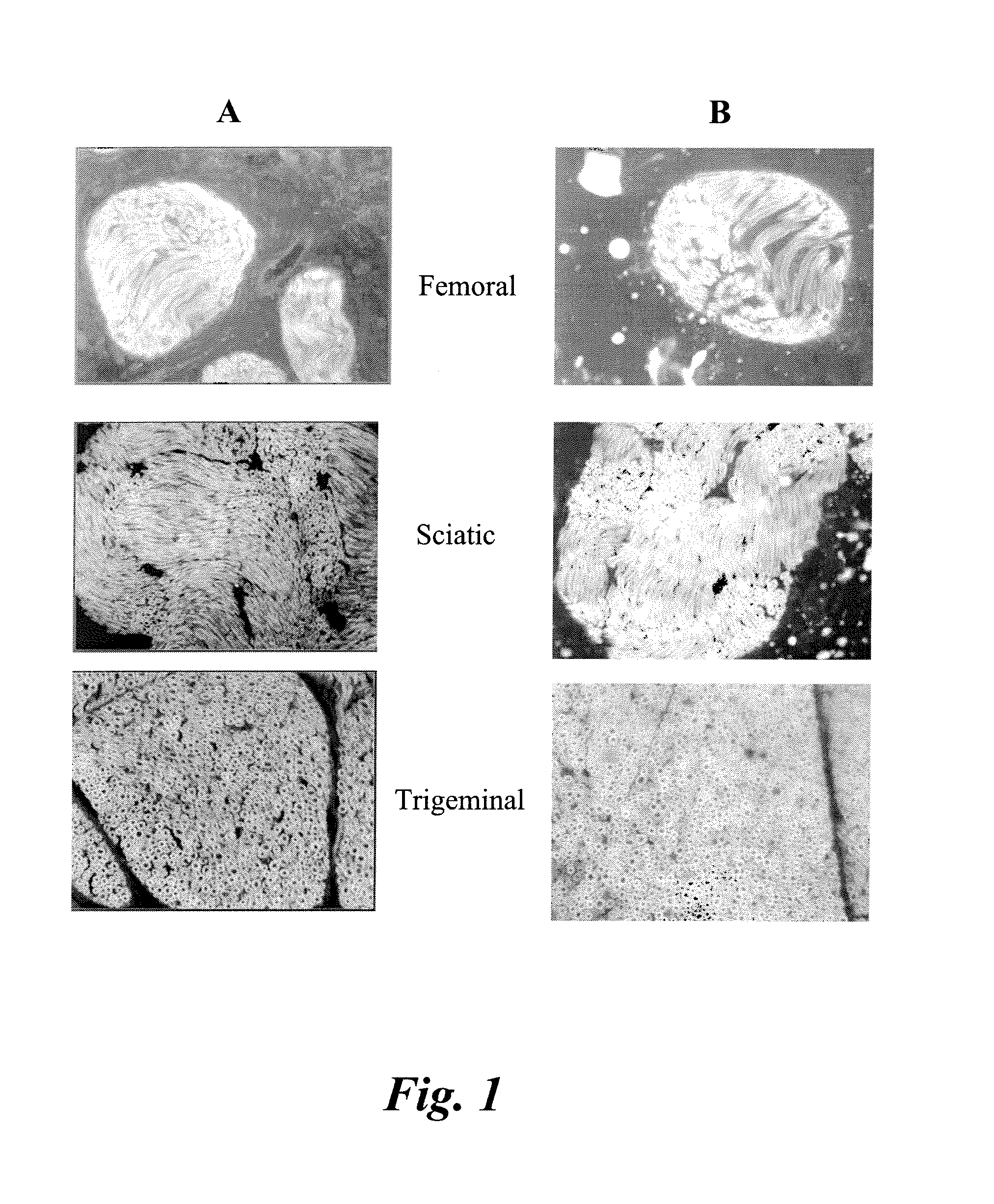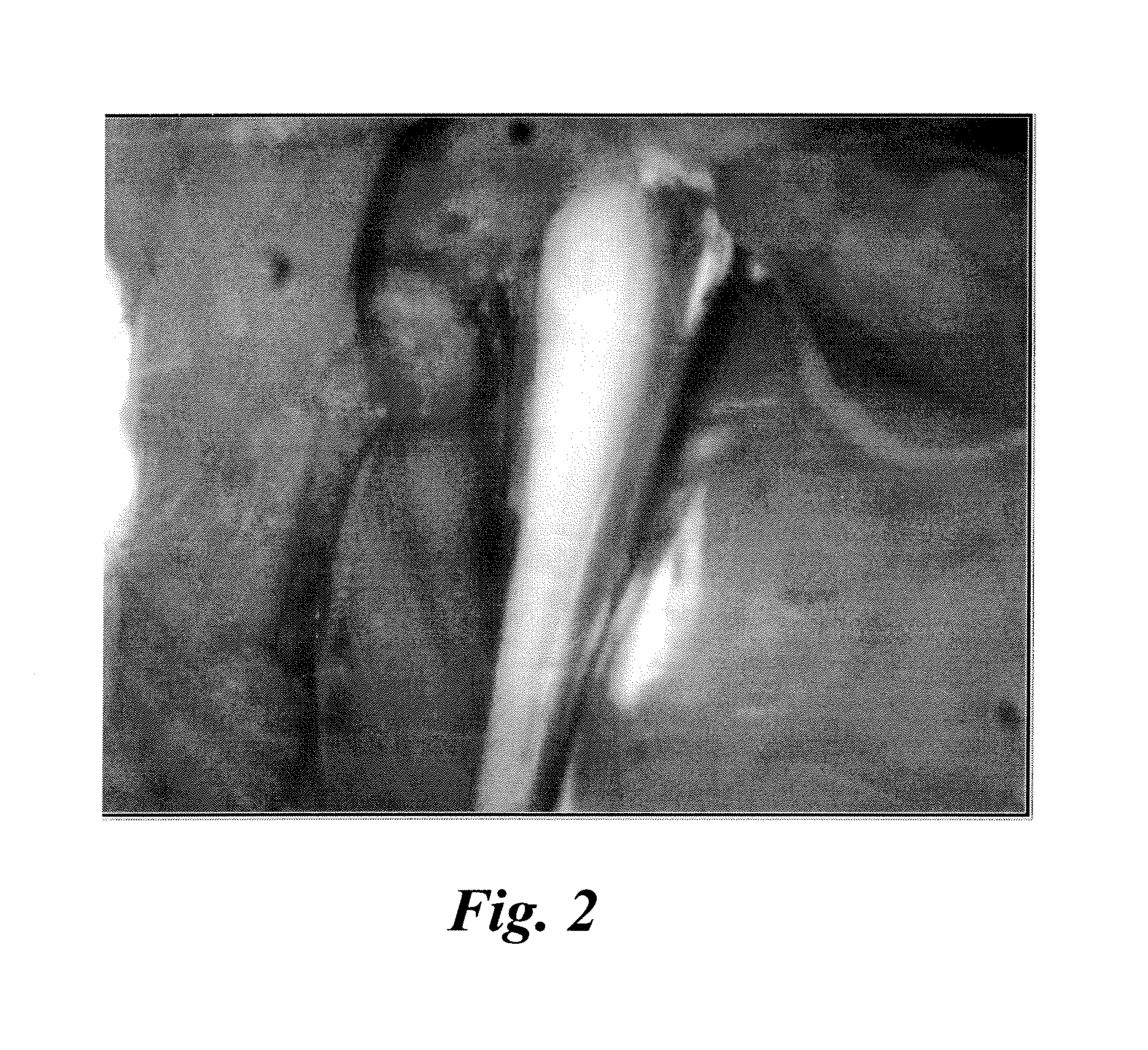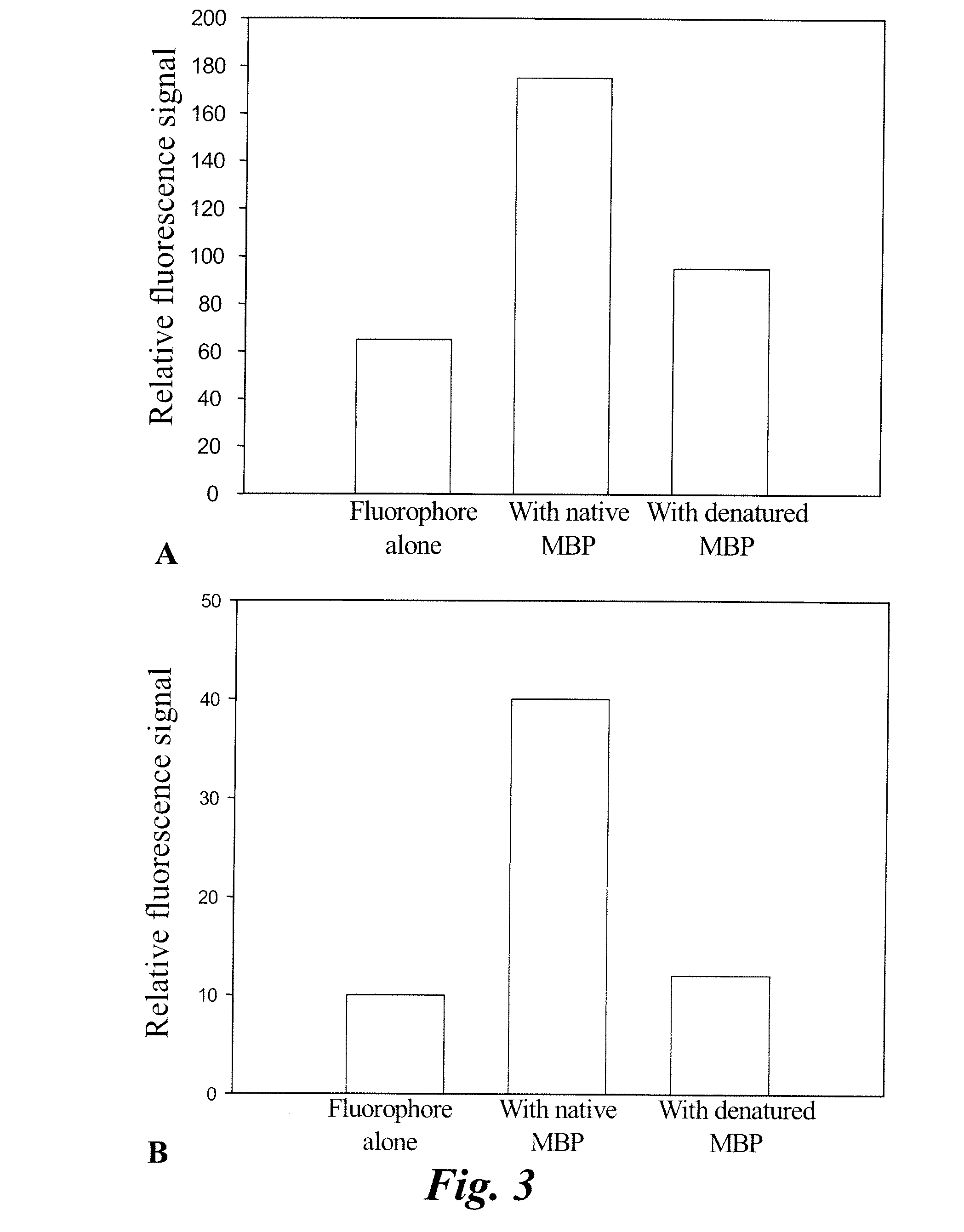Imaging of myelin basic protein
a technology of myelin and basic protein, which is applied in the field of imaging of myelin basic protein, can solve the problems of spinal nerve roots being damaged, long time required for retrograde transport may not be clinically feasible, and signal is typically presen
- Summary
- Abstract
- Description
- Claims
- Application Information
AI Technical Summary
Problems solved by technology
Method used
Image
Examples
example 1
Preparation of Nerve Tissue Sections
[0066]Various nerves including sciatic, femoral, brachial plexus, trigeminal, optic, and penile were harvested from male Sprague Dawley rats or male CD-1 mice. Tissue was fixed by perfusion and / or post-fixation with formalin. Following post-fixation, tissue was cryoprotected in a 20% sucrose solution made in phosphate buffered saline (PBS). Nerves were then flash-frozen using methanol and dry ice in OCT media. In some cases, PVDF membranes were used to help keep the nerves vertical in the OCT media. Thin sections (5-10 um) were sliced on a Leica microtome and stored in a −80° C. freezer prior to staining with antibodies or small molecule compounds.
example 2
Histological Evaluation of Nerve Tissue Sections by Antibody
[0067]Some nerves were stained for hematoxylin and eosin in order to identify basic nerve morphology. Serial sections of the nerves were stained for a panel of myelin proteins; including myelin basic protein (MBP), myelin protein zero (MPZ), myelin associated glycoprotein (MAG), and peripheral myelin protein 22 (PMP22), and Schwann cell proteins 2′,3′-Cyclic Nucleotide 3′-Phosphodiesterase (CNPase) and S100. Antibody vendor, catalog number and dilutions are shown in Table I. The nerves were stained on an automated Ventana Discovery XT immunostainer (Roche). Non-paraffin tissues were pre-treated in Cell Conditioning Solution, CC1, (Ventana). The slides were then blocked in 10% serum (species determined by host of secondary antibody). The primary and secondary antibodies were applied via manual application and incubated with heat (37° C.) on the immunostainer for one hour with rinses in between. The slides were then removed f...
example 3
Measurement of Optical Properties of the Small Molecule Fluorophores
[0068]The fluorophores agents were dissolved in dimethylsulfoxide (DMSO) to make a 10 mM stock solution. An aliquot was taken to prepare a 10 nm-1 uM fluorophore solution in methanol, water, or DMSO. Optical measurements from the three solvents were taken. Absorbance spectra were measured using a Perkin Elmer Lambda 20 UV / VIS spectrometer. Emission spectra were generated using a PTI steady state fluorimeter.
PUM
 Login to View More
Login to View More Abstract
Description
Claims
Application Information
 Login to View More
Login to View More - R&D
- Intellectual Property
- Life Sciences
- Materials
- Tech Scout
- Unparalleled Data Quality
- Higher Quality Content
- 60% Fewer Hallucinations
Browse by: Latest US Patents, China's latest patents, Technical Efficacy Thesaurus, Application Domain, Technology Topic, Popular Technical Reports.
© 2025 PatSnap. All rights reserved.Legal|Privacy policy|Modern Slavery Act Transparency Statement|Sitemap|About US| Contact US: help@patsnap.com



